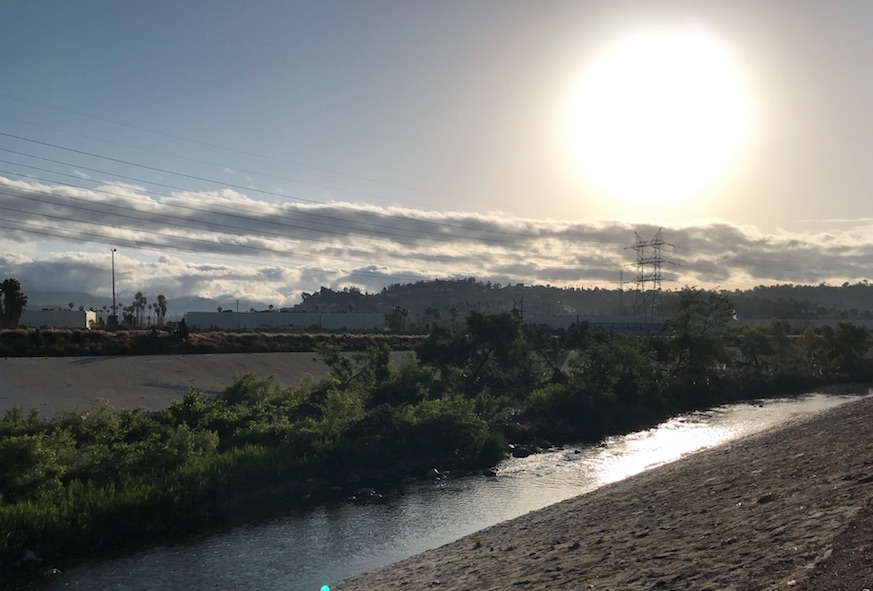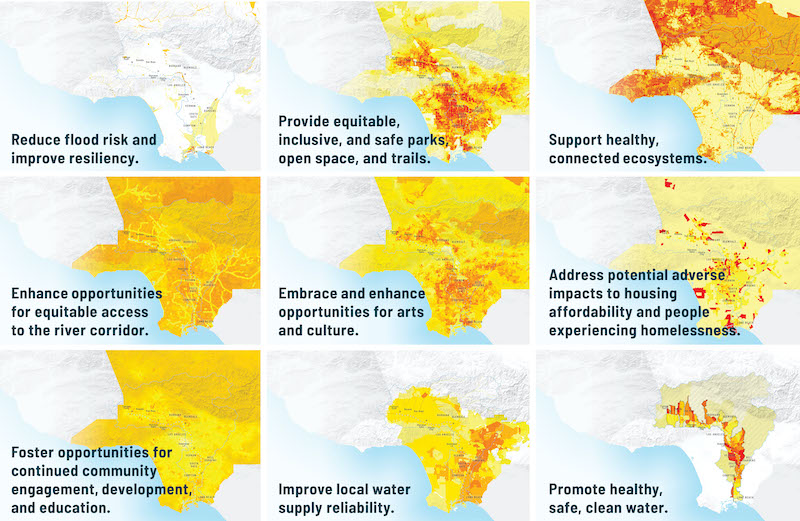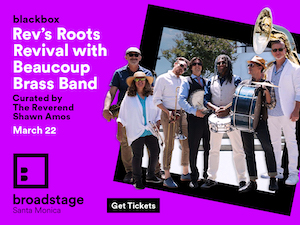
Today, Los Angeles County released a draft of the LA River Master Plan, which you’re welcome to comment on for the next 60 days. This new document details how communities can transform the river’s 51 miles and adjacent 2,300 acres of publicly owned land into connected open space, while still accounting for key issues including housing and safety.
The L.A. River’s function today is predominantly flood risk management, but many have long championed reimagining it as a more accessible public amenity where we go to exercise, relax, socialize, learn, and play.
This new LA River Master Plan, its first update since 1996, provides data, research, and tools communities can use as they develop new projects. While the plan doesn’t outline specific projects, it does identify numerous sites where projects—such as parks, habitats, connectors, and more—could be developed.
To do this, the plan takes into account nine goals: flood risk reduction, parks, ecosystems, access, arts and culture, housing and homelessness, engagement and education, water supply, and water quality. It then identifies where those needs are the greatest. For example, flood risk reduction needs are higher in South L.A. and near the ocean than in the Valley, while needs for parks and open space are higher inland than they are as you move towards the coast.

To create more open space and connect the river, some recommended actions include increasing multi-use trails near the river and adding amenities like shade, bike parking, restrooms, and signage. Improving access could involve closing gaps, adding bike paths, and connecting with Metro. Adding more art and cultural opportunities could include permanent or temporary site-specific installations. Elsewhere in the plan is additional guidance as to how to implement all of that and more.
During a press conference today (which you can watch here), County Board of Supervisors Hilda Solis and Sheila Kuehl introduced the document along with others involved in the planning process, including architect Frank Gehry.
Gehry said he initially entered the project with the “starry-eyed notion” that you could transform the entire river into a beautiful stream with fish, trees, and romantic landscaping. However, studies found that the river is “unruly” about 2% of the time. That means that you can’t just pull out the concrete that lines the flood channels without displacing people and creating risk. But, he suggested, one of many possible ideas was building a platform park over the river. The platform could contain green space and other amenities.
However—and this is why public input is important—platform parks aren’t without controversy. According to the Los Angeles Times, a coalition of environmental groups including Friends of the Los Angeles River, Heal the Bay, and Los Angeles Waterkeeper did not want any platform parks in the master plan, stating that the proposal “stands to do particular ecological harm, create real estate speculation, and precludes future opportunities for climate resilience.”
To weigh in yourself, you can find the 494-page plan here. You can submit public comment using that same website until March 14. Between February and April, the county expects to have the California Environmental Quality Act (CEQA) draft available for public review. The Board of Supervisors could look at a final draft as soon as this summer.


